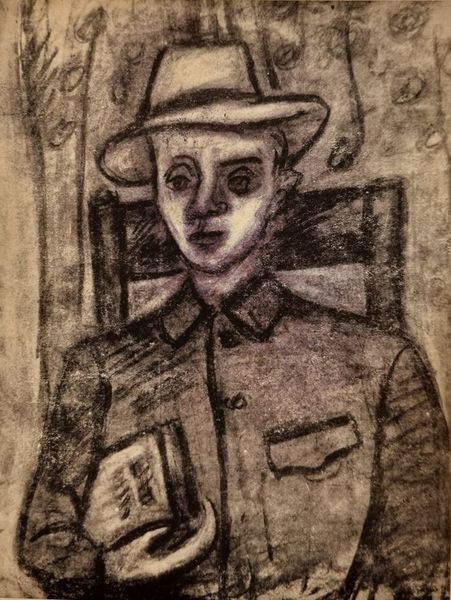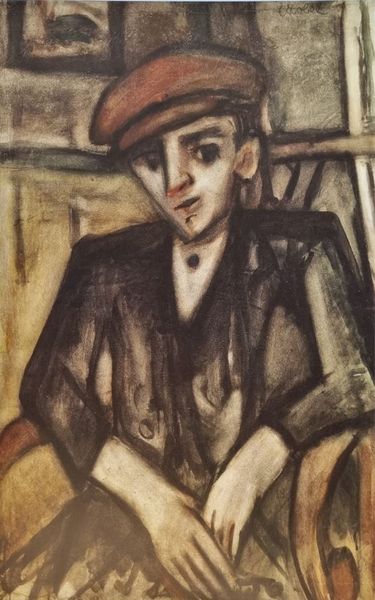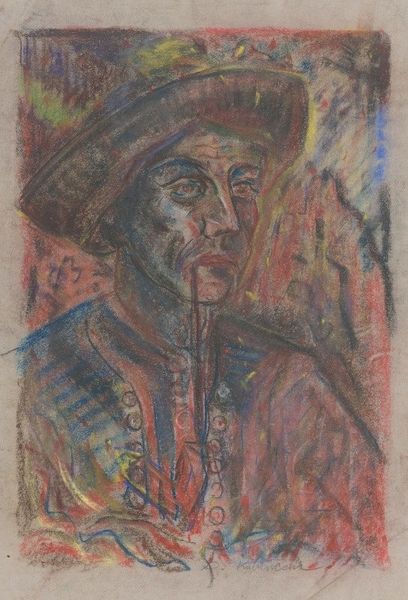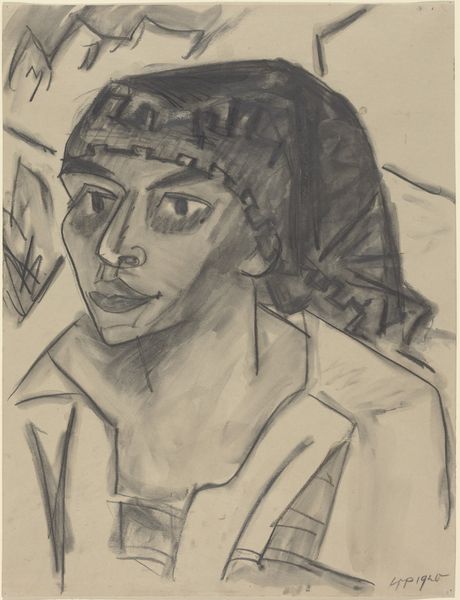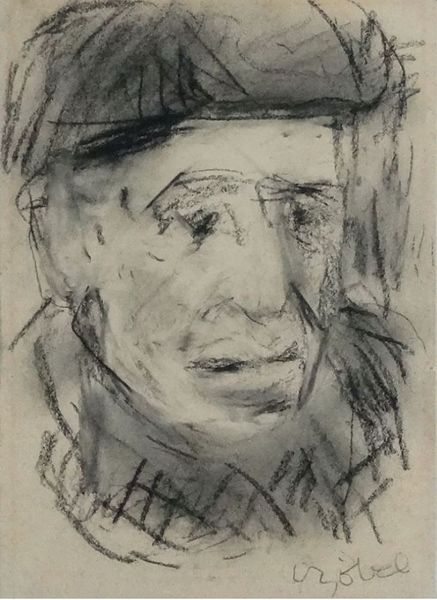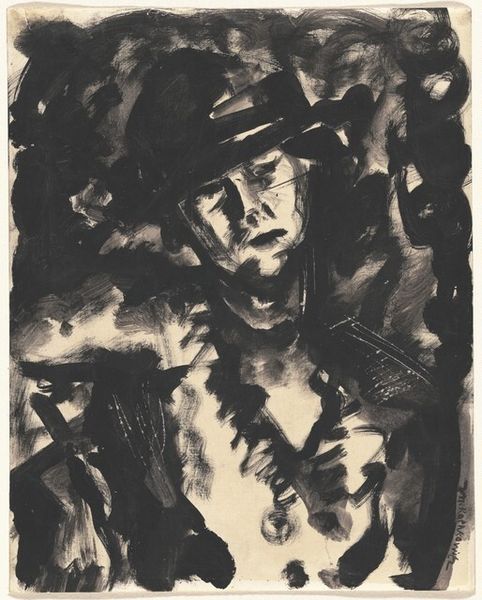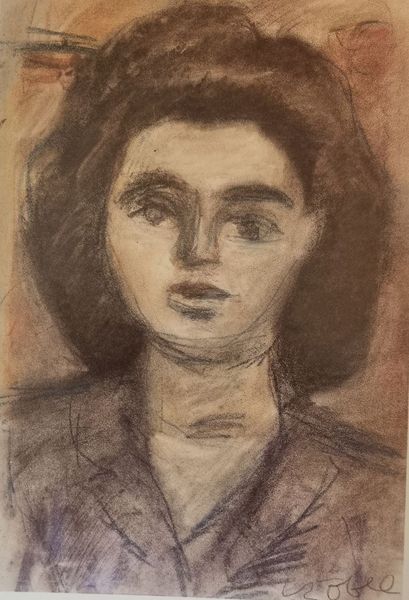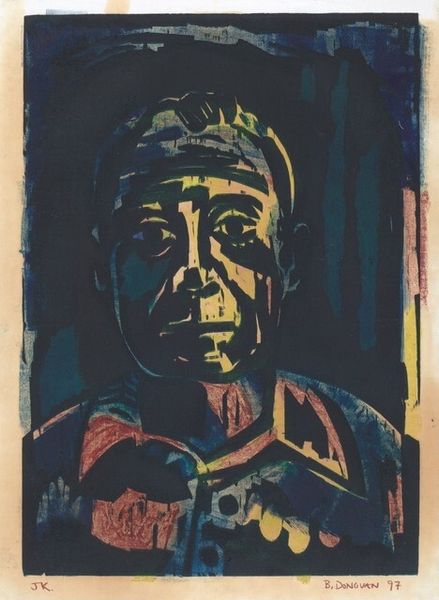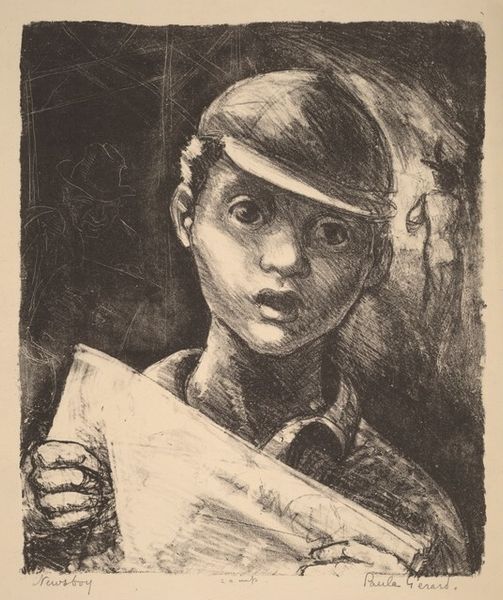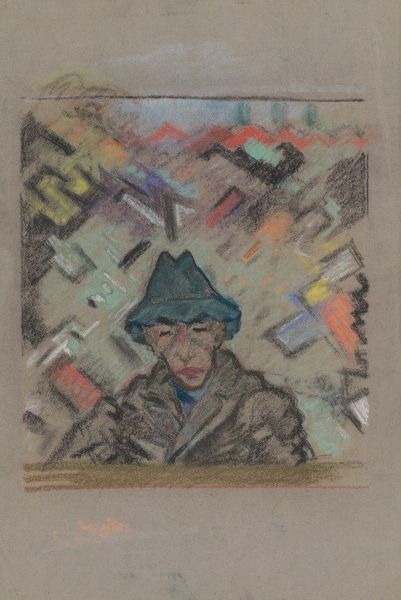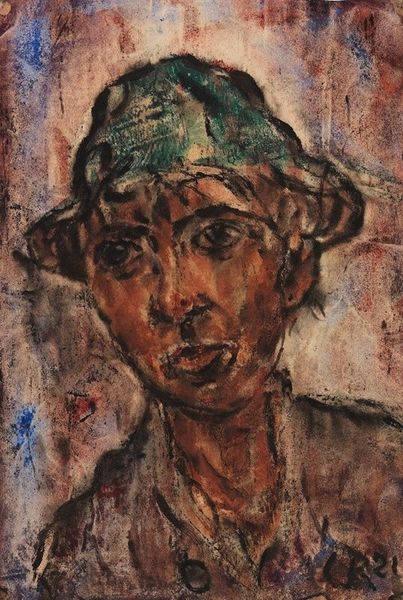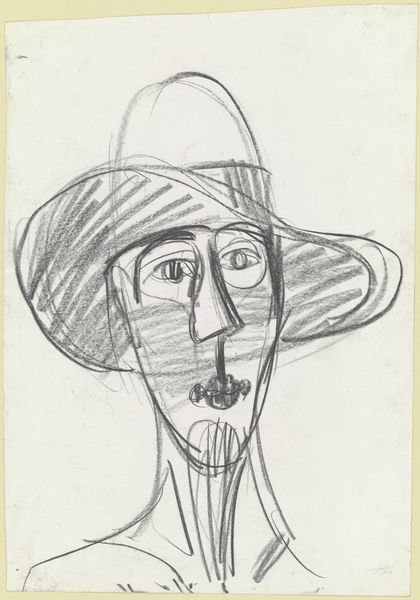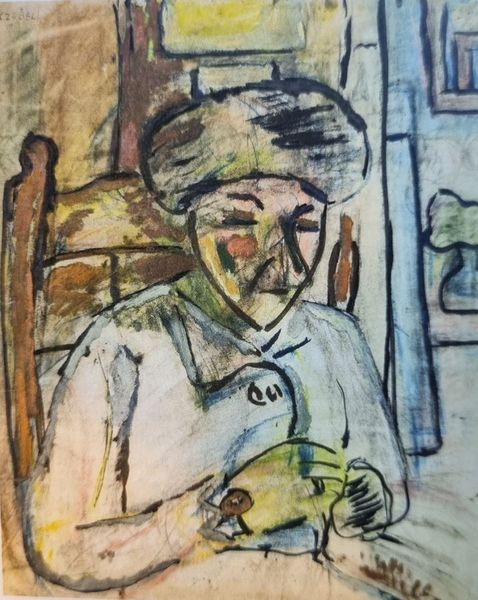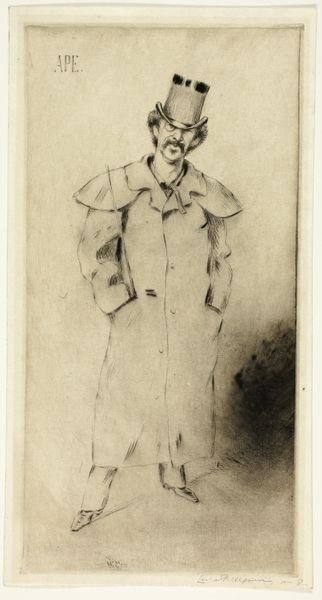
drawing, charcoal
#
portrait
#
drawing
#
charcoal drawing
#
figuration
#
pencil drawing
#
expressionism
#
charcoal
Copyright: Bela Czobel,Fair Use
Curator: Here we have Bela Czobel’s Fiu Arckép from 1925, an example of his exploration with figuration using charcoal on paper. Editor: The first impression is one of melancholy; a certain stillness that pervades the portrait. There’s an almost ghostly quality to the charcoal rendering, especially around the eyes and background. Curator: Czobel's position within the Nagybánya artists' colony in Hungary situated him amid shifting cultural landscapes of early 20th century. What this piece offers is an insight into Czobel’s response to contemporary anxieties regarding Hungarian identity and social fragmentation following the Great War. The figure seems caught between tradition, signified by his modest dress and hat, and the uncertain future represented by the rather haunting Expressionistic style. Editor: Expressionism certainly comes through. The distortions and exaggerations, though subtle, communicate a sense of inner turmoil, almost claustrophobia. The lines around the eyes, for example, are intensely dark, contributing to a gaze that seems both penetrating and vulnerable. I find it striking how Czobel’s choice of charcoal lends itself to a sense of immediacy and rawness, reflecting perhaps the emotional climate of the period. Note how the composition guides the eye directly to the face of the figure, a choice which underscores the focus on interiority. Curator: Absolutely. If we consider the social upheavals in Europe during that era, Czobel’s choice to depict this figure through an expressionistic lens gains added resonance. It serves as a visual record of lived experience amid displacement. The figure seems suspended, trapped, and very alone, reflective of the psychological effects of social restructuring. Editor: Indeed. The expressiveness isn’t simply stylistic. The figure’s position with the book clutched suggests a connection, perhaps a seeking of meaning in this turmoil you speak of, and also possibly alludes to something being intentionally obscured, too. Curator: His artistic rendering asks: how did these events sculpt individuals, shaping not only their realities but also their sense of self? This approach pushes the boundaries of traditional portraiture, making a profound statement about individual agency amidst societal upheaval. Editor: Examining Czobel's Fiu Arckép, it seems the piece stands not just as an aesthetic object but as an open text ripe for decoding regarding historical context. Curator: Precisely; and when paired, those structural nuances reveal this moment's cultural and historical context.
Comments
No comments
Be the first to comment and join the conversation on the ultimate creative platform.
